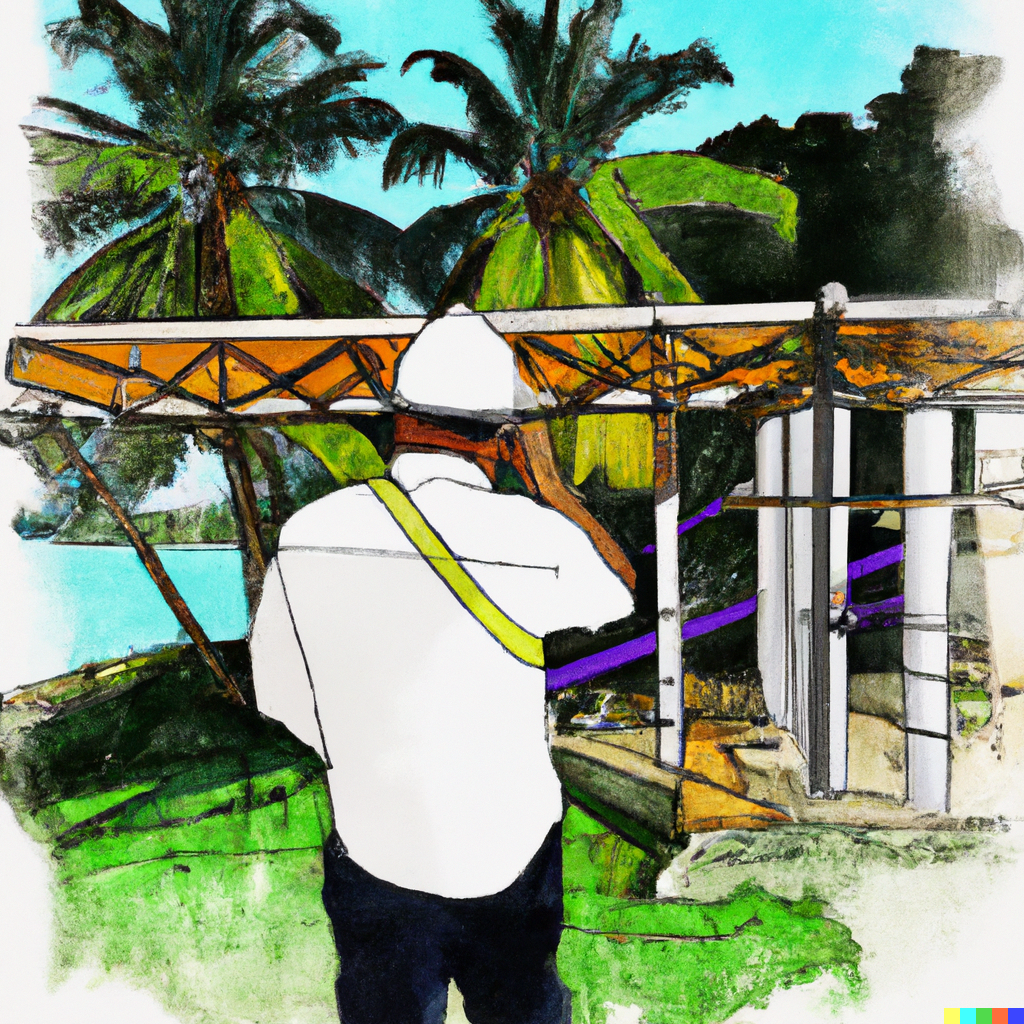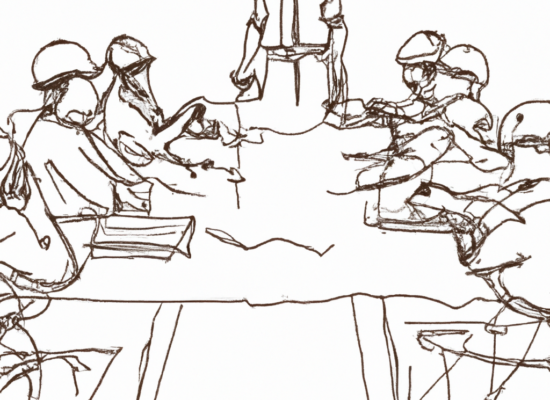Executive Summary: Construction observation and the architect’s role in ensuring compliance and progress during construction.
Construction observation is an essential aspect of the architectural process, as it ensures that a project is constructed in compliance with the design and specifications provided by the architect. Architects play a vital role in the construction process, acting as the link between the owner, contractor, and the design team. They are responsible for evaluating the conformance of the work with the design, determining the progress of the work, and monitoring the implementation of sustainability measures.
Relevant AIA Contracts:
- AIA A201, Contract for Construction
- AIA A401, Agreement between Contractor and Subcontractor
- AIA A701, Instructions to Bidders
- AIA B101, Agreement between Owner and Architect
Construction Observation: The Architect’s Role
Construction observation is an essential aspect of the architectural process, as it ensures that a project is constructed in compliance with the design and specifications provided by the architect. Architects play a vital role in the construction process, acting as the link between the owner, contractor, and the design team. They are responsible for evaluating the conformance of the work with the design, determining the progress of the work, and monitoring the implementation of sustainability measures.
During the construction phase, architects are responsible for reviewing and approving shop drawings, submittals, and other construction documents. They must also ensure that the work is being performed in accordance with the contract documents, including the design, plans, and specifications. They must also ensure that the work is being performed in compliance with all relevant building codes and regulations.
Architects also play a key role in determining the progress of the work. They are responsible for inspecting the work, conducting progress meetings, and providing progress reports to the owner and the design team. They must also ensure that the work is being performed in accordance with the approved schedule and that any delays are identified and addressed in a timely manner.
In addition to evaluating conformance and determining progress, architects are also responsible for monitoring the implementation of sustainability measures. This includes ensuring that the work is being performed in compliance with green building standards and that energy-efficient and sustainable materials and systems are being used. Architects must also ensure that the work is being performed in compliance with any environmental regulations and guidelines.
In summary, construction observation is an important aspect of the architectural process, and architects play a vital role in ensuring that a project is built according to the design and specifications provided. They are responsible for evaluating conformance, determining progress, and monitoring sustainability measures, to ensure that the final product meets the owner’s needs, while also being safe, sustainable and compliant with regulations.
Architect’s Role During Construction
The architect must also ensure that the project is being built in compliance with all relevant building codes, zoning laws, and other regulations. This includes conducting site visits to ensure that the work is being done correctly, and making sure that any necessary permits and inspections are obtained.
In addition to monitoring the construction process, the architect is also responsible for communicating with the client to ensure that their needs and expectations are being met. This includes discussing any changes or modifications to the design, and addressing any concerns or issues that may arise during the construction process.
Another important aspect of the architect’s role is to act as a liaison between the various parties involved in the project, such as the client, the contractor, and any consultants or subcontractors. This includes coordinating the work of these parties to ensure that the project is completed on time and within budget.
Throughout the construction process, the architect must also keep detailed records and documentation of the work being done, including any changes or modifications to the original design. This documentation is crucial for future reference, and may be needed for any warranty or maintenance issues that may arise after the project is completed.
In addition to these duties, the architect may also be responsible for the overall aesthetic and design of the project. This includes working with the client to ensure that the finished project reflects their vision, and making decisions about materials, colors, and other design elements.
Overall, the architect plays a vital role in ensuring that construction projects are completed on time, within budget, and to the satisfaction of the client. They must have a thorough understanding of the construction process, building codes and regulations, and design principles, as well as the ability to effectively communicate with a wide range of stakeholders.
Evaluate Construction Conformance
The role of an architect in evaluating construction conformance is to ensure that the construction of a building adheres to the design and specifications outlined in the contract documents. This includes reviewing submittals, which are documents submitted by the contractor that provide information about the materials and equipment that will be used in the construction, to ensure that they comply with the design and specifications of the building and meet the required standards and codes.
The architect is also responsible for requesting inspections as necessary, such as from local building departments and other regulatory agencies, to ensure that the construction is in compliance with all applicable codes and regulations. In addition, they must review the contractor’s work to ensure it is in compliance with the contract documents, which outline the scope of the work, payment terms, and other important details.
It is also the duty of the architect to act as a liaison between the owner and the contractor, coordinating the work of the various trades and ensuring that the construction is progressing on schedule. They must be able to identify and resolve any issues that may arise during the construction process such as changes in the scope of work or unexpected problems that arise on the job site.
To effectively perform these responsibilities, the architect must have a thorough understanding of building codes, regulations, and industry standards, as well as a strong knowledge of construction techniques and materials. They must also possess excellent communication and problem-solving skills, as well as the ability to work well under pressure and manage multiple tasks simultaneously.
In summary, an architect plays a crucial role in ensuring that the construction of a building meets the design and specifications outlined in the contract documents. They review submittals, request inspections, review the contractor’s work, and act as a liaison between the owner and contractor, to ensure that the construction is in compliance with all codes and regulations and is progressing on schedule. They have to have a thorough understanding of construction, building codes, and regulations as well as strong problem-solving and communication skills.
Determine Construction Progress
The role of an architect in a construction project is multifaceted and encompasses various responsibilities. One of the key responsibilities of an architect is to oversee and monitor the progress of the construction. This includes determining the schedule of the construction, assessing the percentage of completion, and ensuring that the project is on track and within budget.
To effectively monitor the progress of the construction, architects typically rely on field reports. These reports provide detailed information about the construction site, including the date and time of the observation, weather conditions, work in progress, and any observations or issues that were identified during the visit. Field reports are an essential tool for architects as they provide a clear and concise overview of the project’s progress and help architects to identify any potential issues or delays that may impact the completion of the project.
In addition to monitoring the progress of the construction, architects are also responsible for ensuring that the project is being built according to the approved plans and specifications. They review and approve all submittals, including shop drawings and material samples, and ensure that the construction is in compliance with all local building codes and regulations. Architects also conduct regular inspections of the construction site to ensure that the work is being performed in accordance with the approved plans and specifications.
Furthermore, architects are responsible for managing the project team and ensuring that all team members are working together effectively. This includes coordinating with the contractor, subcontractors, and other members of the design team, such as engineers and interior designers, to ensure that the project is moving forward smoothly.
In summary, the role of an architect in a construction project is to oversee and monitor the progress of the construction, ensuring that the project is on schedule and within budget, while also ensuring that the project is being built according to the approved plans and specifications, and that all team members are working together effectively. Field reports are an essential tool for architects to accomplish all these tasks.
Miscellaneous Architect CA Responsibilities
Architects are also responsible for determining the progress of construction, which includes conducting site visits, inspecting work in progress, and monitoring the schedule to ensure that the project is on track. They must also evaluate the construction for conformance to the plans and specifications, including checking for compliance with building codes, zoning regulations, and other legal requirements. Additionally, architects are responsible for addressing any issues that arise during construction and working with the contractor to resolve them in a timely manner.
Another important responsibility of architects during construction is to ensure that the project is sustainable and energy efficient. This includes monitoring the use of materials, ensuring that the building is designed to reduce energy consumption, and ensuring that the building is designed to be durable and long-lasting.
Finally, architects are responsible for working with the building official to ensure that the building meets all safety and occupancy requirements. This includes obtaining the necessary permits and approvals, as well as ensuring that the building is inspected and meets all legal requirements. Once all requirements are met, the architect will work with the building official to issue a certificate of occupancy, which is the final step in the construction process.
In summary, architects have several key responsibilities during construction, including determining construction progress, evaluating construction conformance, monitoring sustainability requirements, and working with the building official to obtain a certificate of occupancy. These responsibilities require architects to be knowledgeable about the construction process and to have strong problem-solving skills. They must also be able to work effectively with a wide range of stakeholders, including contractors, building officials, and other professionals.
Architect’s Role in Construction Observation
As an architect, it is crucial to be familiar with the progress and quality of the work on a construction project. Site visits and construction observations provide an opportunity to do this, as well as keep the owner informed, protect them from defects or deficiencies in the work, and ensure that the work is progressing as scheduled and in accordance with the contract documents. The frequency of these site visits can vary depending on the size, complexity, type of construction, and schedule of the project.
During a site visit, the architect should thoroughly inspect the work that has been completed to date, noting any issues or concerns that need to be addressed. They should also assess the work in progress and determine if it is on schedule and in compliance with the contract documents. This information should be documented in a field report, which typically includes details such as the project number, field report number, date and time of observation, weather conditions, work in progress, observations made, assessment of conformance to schedule, percentage complete, list of items to verify, action items, and any attachments.
The field report serves as a record of the architect’s observations and allows them to track the progress of the project over time. It also provides evidence of the architect’s due diligence in monitoring the project and can be used to protect the owner’s interests in the event of disputes.
The architect’s role in construction observation and site visits is essential to ensure that the project is completed on time, within budget, and to the specifications outlined in the contract documents. The architect’s attention to detail and ability to identify and resolve issues as they arise can help to prevent delays and costly mistakes. The more complex and larger the project, the more frequent site visits are required to keep it on track.
In summary, Site visits and construction observations are crucial for an architect to ensure that the project is progressing as scheduled and in accordance with the contract documents. The architect must document their observations in field reports, which serve as a record of the project’s progress and can be used to protect the owner’s interests in case of disputes. The frequency of site visits varies depending on the size, complexity, type of construction, and schedule of the project.
Ensuring Successful Completion of Construction Projects
Construction observation is a crucial aspect of the architectural process because it ensures that a project is constructed according to the design and specifications provided by the architect. Throughout the construction process, architects play a vital role in monitoring conformance, determining progress, and ensuring sustainability measures are met. One of the most important ways that architects can guarantee successful completion of construction projects is through regular site visits and observations.
During these visits, the architect will closely inspect the work being done on the site, looking for any potential issues or deviations from the original design. They will also check to make sure that all relevant building codes and regulations are being followed, and that safety measures are in place to protect workers and the general public. Additionally, the architect will work closely with the contractor and other members of the construction team to ensure that the project is on schedule and within budget.
Another key aspect of construction observation is keeping the owner informed about the progress of the project. The architect will provide regular updates to the owner, including detailed reports on the status of the work, any issues that have arisen, and any proposed solutions to these issues. This helps to ensure that the owner is always aware of what is happening on the site and can make informed decisions about the project.
In addition to site visits and observations, architects also use a variety of other tools to ensure the successful completion of construction projects. For example, they may use project management software to track the progress of the work, identify potential delays, and develop solutions to overcome these challenges. They may also use building information modeling (BIM) software to create detailed 3D models of the project, which can be used to identify potential issues and improve collaboration between the different members of the construction team.
Overall, construction observation is a vital aspect of the architectural process that helps to ensure that projects are completed on time, within budget and to the highest standards of quality and safety. By utilizing the right approach and tools, architects can guarantee successful completion of construction projects, and protect the interests of the owner. The job of an architect does not end when the design is complete, it continues throughout the construction process and it is a vital aspect of ensuring the success of the project.
 Copyright secured by Digiprove
Copyright secured by Digiprove 



